Here are few examples of different types of IVF protocols used in our Austin fertility center
Lupron overlap protocol (long down-regulation protocol)
The most commonly prescribed stimulation protocol in the United States uses BCPs, leuprolide acetate (Lupron) to prevent ovulation, gonadotropins such as follicle stimulating hormone (FSH) or human menopausal gonadotropin (hMG) to cause the eggs to develop, human chorionic gonadotropin (hCG) to cause the eggs to mature, and progesterone to support the lining.
In this regimen, a patient will take BCPs for 3-4 weeks. Five days before her last BCP, she will start Lupron. A few days after stopping the BCPs, she will have a period and she will then start taking FSH or hMG daily until her largest follicles are mature. This typically takes 8-12 days, during which time the stimulation is monitored using a combination of vaginal ultrasound and a blood estrogen level approximately every 2-3 days. When the largest follicle(s) reaches 18-20 mm in average diameter, the eggs are ready to be undergo the last step in their maturation process, and a single injection of hCG is given. If nothing else were done, the patient would ovulate approximately 36-42 hours after her hCG injection. In order to retrieve the eggs before they ovulate spontaneously, the patient is taken into the operating room and the eggs are removed non-surgically approximately 36 hours following hCG administration. Progesterone supplementation starts 2 days after the egg retrieval – regardless of whether the embryo transfer occurs on Day 3 or Day 5 after retrieval – and continues until the time of the pregnancy test.
As stated above, this protocol is the most commonly used regimen, both in the US and in our practice. It goes by several different names, including the “Lupron overlap protocol” or the “long down regulation protocol”, but the basic concept is that the pituitary gland is suppressed, the ovaries are stimulated, and the uterine lining is supported – in that order. While some practices make a big deal over the choice of gonadotropin (some use only “recombinant FSH”, such as Gonal F or Follistim while others primarily use urinary hMG drugs such as Bravelle or Menopur), most studies suggest that there is very little – if any – difference in pregnancy rates between the different medications.
Antagonist protocol
Approximately fifteen years ago, a different type of GnRH analog was developed. Called GnRH “antagonists”, these medications work differently than the GnRH “agonists” like Lupron. Rather than slowly suppress the pituitary over 4-5 days like Lupron does, these newer medications, Cetrotide and Ganirelix Acetate – rapidly suppress the pituitary in a matter of hours. GnRH antagonist protocols have several advantages over GnRH agonists protocols.
The number of daily injections are fewer (4 to 5 days) of antagonists versus 3-4 weeks of agonists) and the length of time to stimulate the follicles to maturity is one or two days shorter, so you may need less total gonadotropins. In addition, your chance of developing ovarian hyperstimulation syndrome is less with GnRH antagonist protocols. Multiple research studies have compared IVF agonist and antagonist protocols with most showing similar pregnancy rates.
Poor responder protocol (microdose flare or low dose Lupron protocol)
If we believe that a particular patient will not respond well to stimulation medications, either because she is older, she has diminished ovarian reserve, or she has had previous ovarian surgery, we will frequently use our “poor responder protocol”. Called the “flare”, the “microdose flare”, or the “low dose Lupron” protocol, this regimen uses the same medications as the “Lupron overlap” protocol. The major difference is that, by cutting the dose of Lupron down to one sixth of the routine dose, and by giving it twice daily, the Lupron actually turns the pituitary gland “on” rather than “off”, producing major release of FSH. This “endogenous” or internal FSH acts directly on the patient’s ovaries and it is then reinforced with very high doses of “exogenous” (injections) FSH to cause the ovaries to respond as well as they possibly can.
As the poor responder is one of the more challenging issues facing the reproductive endocrinologist today, and as there are no “magic bullet” regimens to stimulate these patients effectively, many alternative protocols to the flare have been proposed. Some of these involve the use of oral medications, such as Clomid or Femara in addition to gonadotropins. Others involve newer supplements such as DHEA, and still others involve the use of injectable medications such as growth hormone. While many studies to evaluate the effectiveness of these additional medications have been conducted, there are unfortunately very few definitive conclusions that have been reached.
In summary, ovarian stimulation is a very complex process. Many different stimulation regimens have been developed and evaluated and it is therefore very important for you to discuss your options in detail with your physician. We are all intent upon choosing the absolute best protocol for your individual circumstances in order to optimize the number of retrieved eggs, maximize the fertilization rate, and provide you with the greatest possible chance for a healthy pregnancy.











